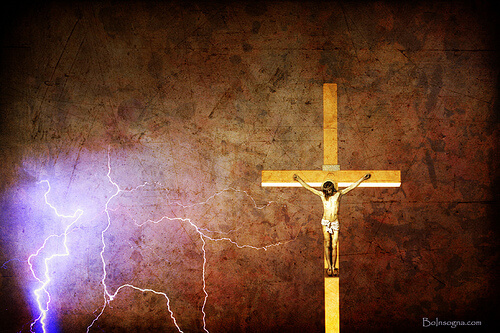
Philippians 2:5-8
The Greek philosopher, Aristotle, whose thought pervades western philosophy and theology, called God the “Unmoved Mover”. He thought of deity as the efficient cause of all things, separate from, uncaring, and unmoved by what He had created. How different is God revealed to be in the passion of Christ Jesus!
In today’s text the Apostle Paul writes about a God so passionate and moved by His love for us that He pours out His very life for us. He comes down to us, taking the form of a slave, humbling Himself to death, “even death on a cross”. In the Dictionary of Symbolism, Hans Biedermann says that early Christians were reluctant to ever use the cross as a symbol because it represented for them such a hellish form of criminal execution. C. S. Lewis observed that the cross did not become a symbol in Christian art until anyone who had ever seen the horrors of crucifixion had long since died. That’s how excruciating the cross really was.
It was not until the emperor Constantine had banned crucifixions and the bloody sight of them forgotten that the cross became a symbol for Christ-followers. Even with Mel Gibson’s The Passion of the Christ it is impossible for us to imagine the revulsion provoked by even the mention of the word “cross”. Cicero, the first century Roman statesman and philosopher said that the word “cross” should not be spoken in polite society.
Crucifixion was a strategy for torture without equal in agony and humiliation for the ancients. Adding to Jesus’ shame on the cross was that for His countrymen it was a sign of being cursed by God: “for anyone hung on a tree is under God’s curse” (Deuteronomy 21:23; Galatians 3:13).
Nailing a person to a post in order to slowly torture him to death was a method of execution used by the Persians, Carthaginians, and Macedonians, but perfected to its highest art by the Romans. First the condemned was stripped naked before everyone’s eyes so that he might be made sport of and humiliated. Then he was beaten, scourged by a whip of leather and bits of jagged metal in order to rip and lay open the flesh. After suffering near lethal loss of blood the criminal was compelled to carry the horizontal beam of his cross to some place outside the city walls. It was dictated that crucifixion be outside the city walls to demonstrate that the criminal was cut off from his community, cut off even from his humanity.
After arriving at the place of execution Jesus hands were nailed fast to the crossbeam of His cross. Then like a piece of meat He was hoisted up by ropes to be inserted into the upright post in the ground. Finally Jesus’ feet were impaled to the post, and His cross of torture was complete.
Crucifixions were always carried out in very public places in order to add to the soldier’s sport and humiliation. The naked bodies of the condemned were often allowed to rot on their crosses and be picked at by vultures and vermin. It was from such a cross that Jesus prayed for those torturing and mocking Him: “Father, forgive them, for they do not know what they are doing” (Luke 23:34). Such is God’s love for you and for me poured out on the cross!
All our problems,
We send to the cross of Christ,
All our difficulties,
We send to the cross of Christ,
All the devil’s works,
We send to the cross of Christ,
All our hopes,
We set on the risen Christ.
Christ the Sun of Righteousness shine upon you
and scatter the darkness from before your path:
And the blessing of God Almighty, Father, Son, and Holy Spirit,
be among you, and remain with you, always.
—Anglican Church of Kenya Blessing
Grace and peace,
Tim
photo by Striking Photography by Bo



